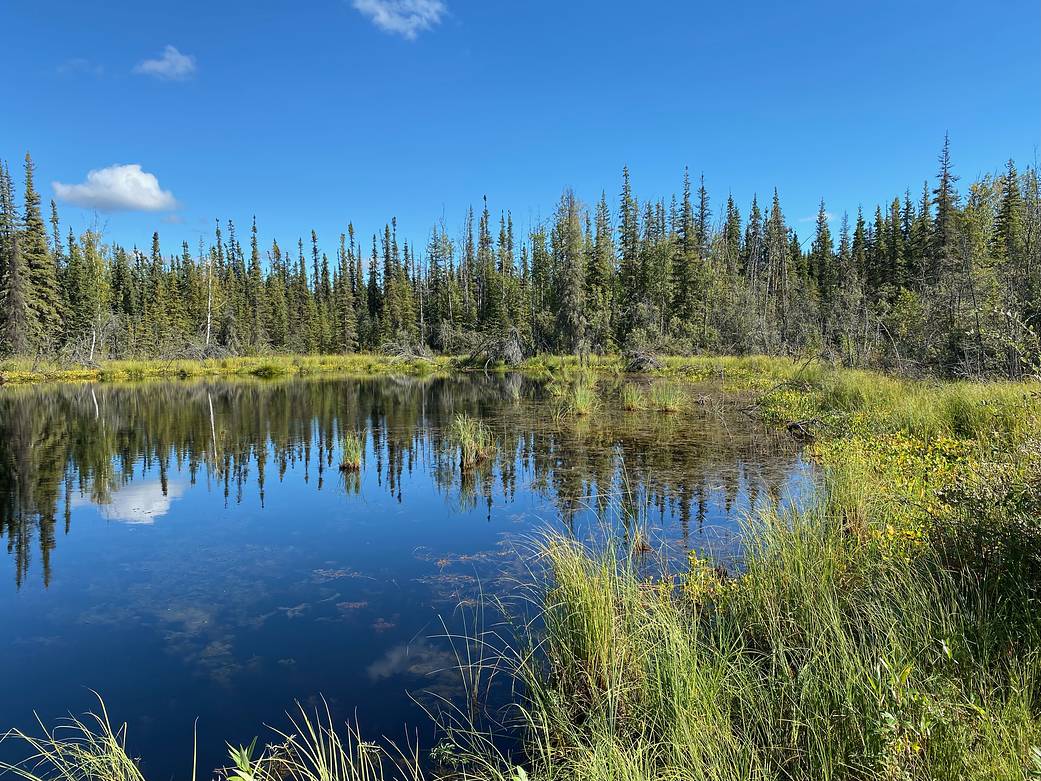Since 2015, scientists participating in NASA’s Arctic Boreal Vulnerability Experiment (ABoVE) have been studying the impacts of climate change on Earth’s far northern regions and how those changes are intertwined. As our planet warms, permafrost—layers of soil that have stayed frozen for at least two years—thaws at an accelerating rate. This is changing the shape and vegetation of landscapes and, in some cases, creating new ponds and lakes that are also hotspots for greenhouse gas emissions.
This thawing process is happening all over Alaska and northwestern Canada, which already has millions of lakes and ponds. Most of these lakes are hundreds or thousands of years old, meaning the microbes have run out of organic matter to decompose and the lakes are no longer releasing significant amounts of methane. However, lakes like Big Trail Lake near Fairbanks, Alaska (seen above), are newer and release methane into the atmosphere.
In summer 2022, the ABoVE team investigated permafrost thaw, methane emissions from lakes, and the effects of wildfires in Alaska and northwestern Canada with instruments observing from research aircraft and with scientists collecting measurements on the ground.
Image credit: NASA/Sofie Bates
自2015年以来,参与NASA北极北方植物脆弱性实验(ABoVE)的科学家一直在研究气候变化对地球极北地区的影响,以及这些变化如何相互交织在一起。随着地球变暖,永久冻土——至少冻结了两年的土层——正在加速融化。这正在改变景观的形状和植被,在某些情况下还产生了新的池塘和湖泊,这些池塘和湖泊也是温室气体排放的热点。
这种融化过程正在阿拉斯加和加拿大西北部发生,那里已经有数百万个湖泊和池塘。这些湖泊大多有数百年或数千年的历史,这意味着微生物已经耗尽了可分解的有机物,湖泊不再释放大量的甲烷。然而,像阿拉斯加费尔班克斯附近的大径湖(见上图)这样的湖泊是新形成的,会向大气中释放甲烷。
2022年夏天,ABoVE团队利用从研究飞机上观测的仪器和在地面收集测量数据的科学家,调查了阿拉斯加和加拿大西北部的永久冻土融化、湖泊的甲烷排放和野火的影响。
影像来源: NASA/Sofie Bates







